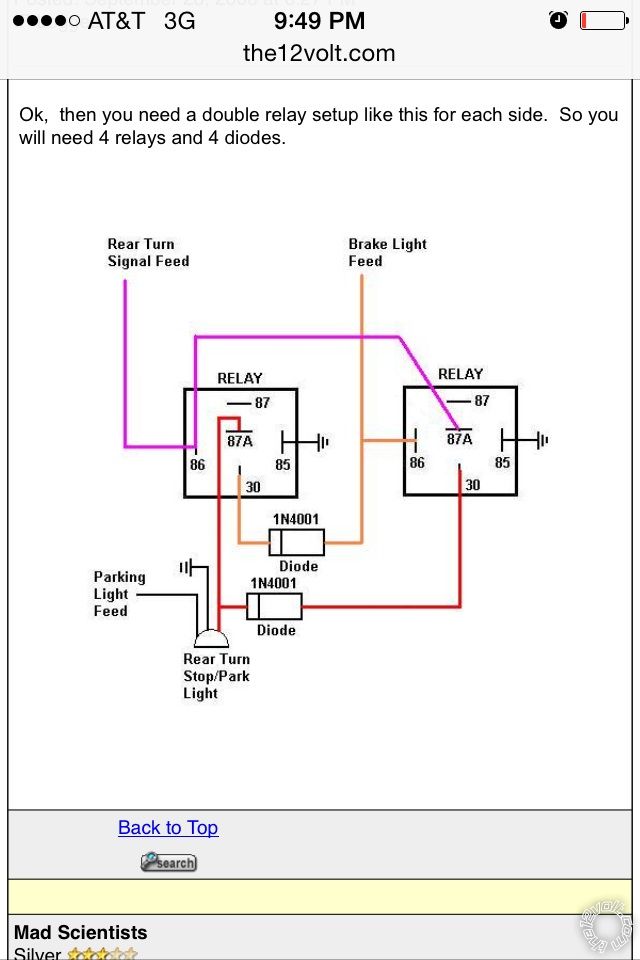Posted: December 10, 2014 at 8:14 PM / IP Logged
Posted: December 10, 2014 at 8:57 PM / IP Logged
Posted: December 11, 2014 at 12:33 AM / IP Logged
Posted: December 11, 2014 at 8:49 AM / IP Logged
Posted: December 11, 2014 at 10:10 AM / IP Logged
Posted: December 11, 2014 at 10:39 AM / IP Logged
Posted: December 11, 2014 at 10:50 AM / IP Logged
Posted: December 11, 2014 at 3:51 PM / IP Logged
Posted: December 11, 2014 at 4:02 PM / IP Logged
Posted: December 11, 2014 at 7:14 PM / IP Logged
 Printable version
Printable version


| You cannot post new topics in this forum You cannot reply to topics in this forum You cannot delete your posts in this forum You cannot edit your posts in this forum You cannot create polls in this forum You cannot vote in polls in this forum |

| Search the12volt.com |
Follow the12volt.com 
Friday, April 19, 2024 • Copyright © 1999-2024 the12volt.com, All Rights Reserved • Privacy Policy & Use of Cookies


Friday, April 19, 2024 • Copyright © 1999-2024 the12volt.com, All Rights Reserved • Privacy Policy & Use of Cookies
Disclaimer:
*All information on this site ( the12volt.com ) is provided "as is" without any warranty of any kind, either expressed or implied, including but not limited to fitness for a particular use. Any user assumes the entire risk as to the accuracy and use of this information. Please
verify all wire colors and diagrams before applying any information.






 Hopefully that picture is attached correctly!
Just wanted to first say thanks for all the wealth of information here, it is greatly appreciated.
So I have a original 1927 model T roadster with a hemi. I got the whole car wired up and fired up. Only problem was I was using a 2 wire 1157 bulb and socket. I had turn signals and brake lights, but wanted park lights on the dim filament and the turn and brake on the bright.
When I had everything working before, the power for blinkers came out of the fuse block, which has a built in flasher. That went straight to a toggle switch, on off on. From there I ran wires to front and rear for signals and all worked fine.
I went by this diagram here so I could add the turn and brake on the bright filament, park on the dim, and grounded socket to the frame.
Everything works perfect and I followed your schematic exactly. Only thing is when I apply the brakes, I get no turn signals. I let off on the brake and the signals come back on.
What am I doing wrong here? I suspect I might need to change something in the wiring of the relays. I just don't know where to start?
I appreciate the help and hope that wasn't too long winded!
Thank you
Bryan
Hopefully that picture is attached correctly!
Just wanted to first say thanks for all the wealth of information here, it is greatly appreciated.
So I have a original 1927 model T roadster with a hemi. I got the whole car wired up and fired up. Only problem was I was using a 2 wire 1157 bulb and socket. I had turn signals and brake lights, but wanted park lights on the dim filament and the turn and brake on the bright.
When I had everything working before, the power for blinkers came out of the fuse block, which has a built in flasher. That went straight to a toggle switch, on off on. From there I ran wires to front and rear for signals and all worked fine.
I went by this diagram here so I could add the turn and brake on the bright filament, park on the dim, and grounded socket to the frame.
Everything works perfect and I followed your schematic exactly. Only thing is when I apply the brakes, I get no turn signals. I let off on the brake and the signals come back on.
What am I doing wrong here? I suspect I might need to change something in the wiring of the relays. I just don't know where to start?
I appreciate the help and hope that wasn't too long winded!
Thank you
Bryan



